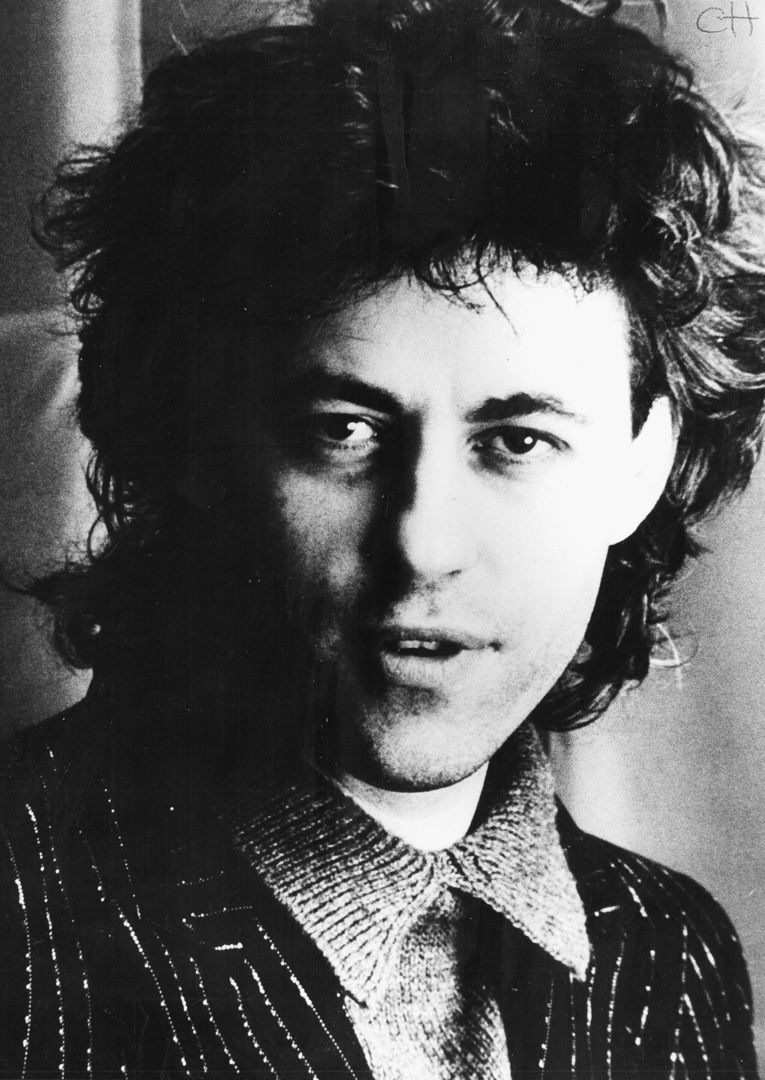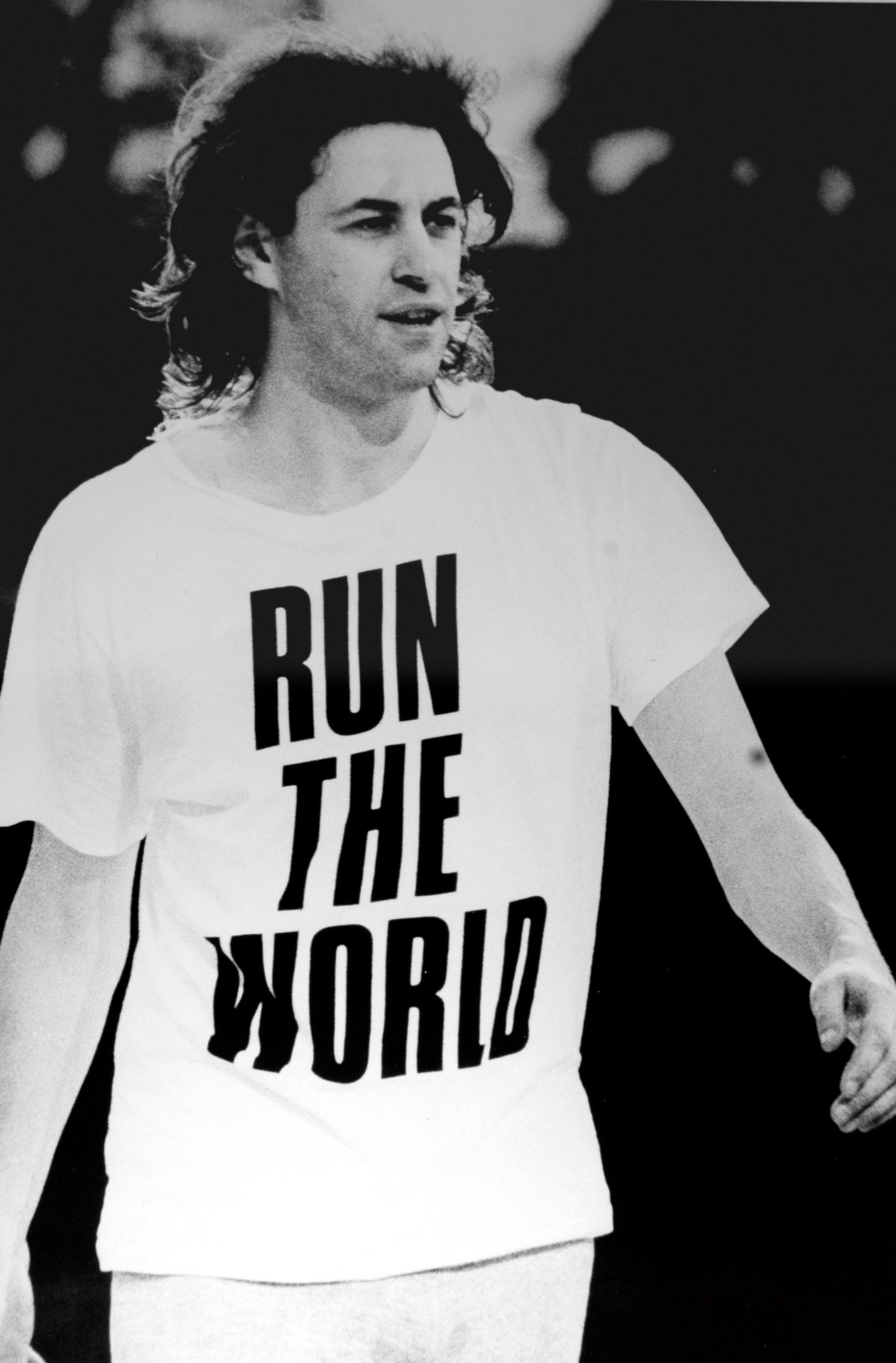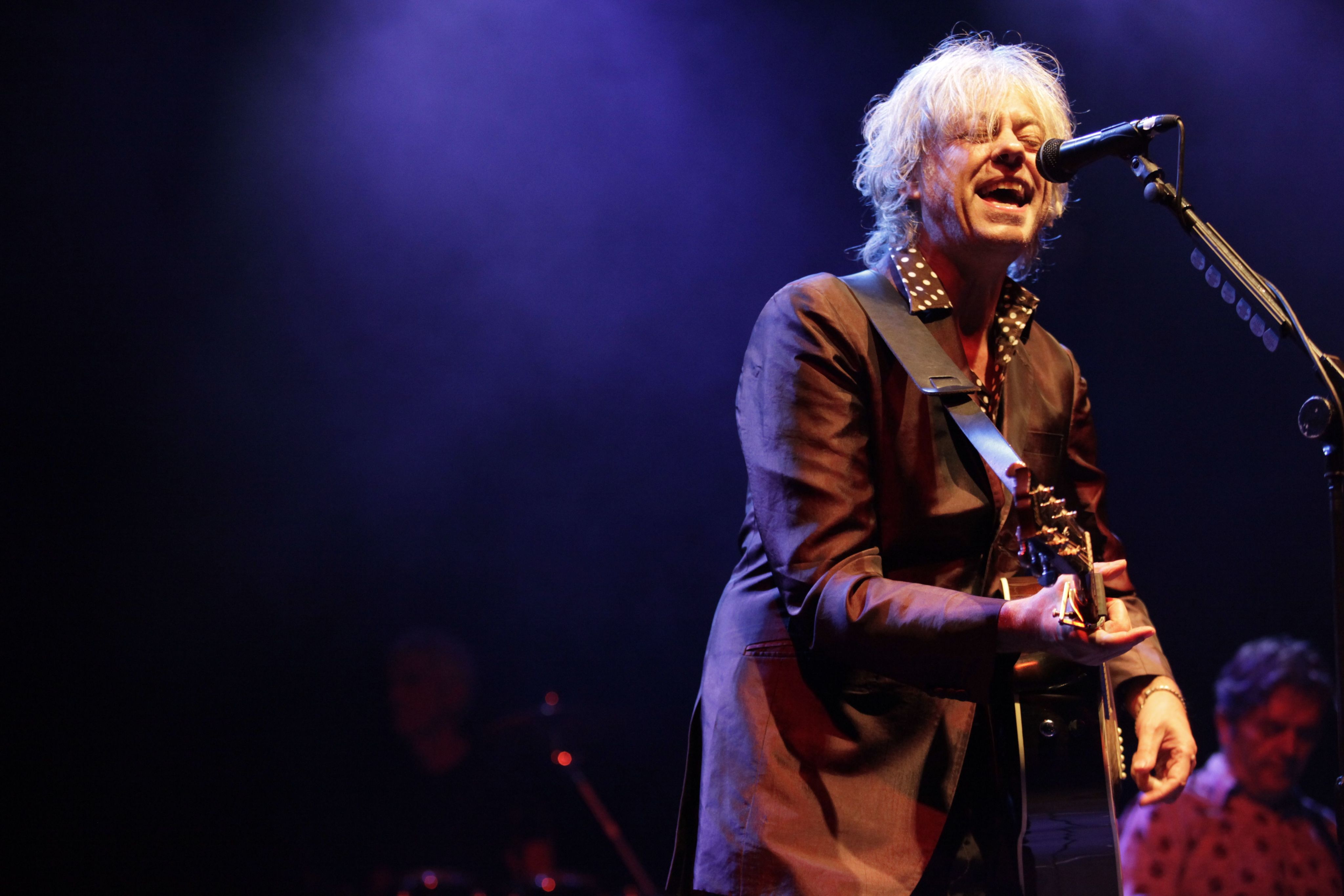Do They Know It's Christmas?
By Bob Geldof and Midge Ure

Though there were notable rock 'n’ roll charity records before – George Harrison’s Concert For Bangladesh release likely being the best known – none have had the far-reaching impact, before or since, of the 1984 release of Band Aid’s ‘Do They Know It’s Christmas?’ The song was Irishman Bob Geldof’s first response to the famine that gripped Ethiopia. He had hoped the release of a seasonal single would raise £70,000 for Ethiopian Famine relief – and he browbeat an impressive cast of 1980s stars to come together to make it happen. With Geldof’s forceful personality pushing it via every platform available, sales of the single went into overdrive. In just the first week of its release, on 3 December 1984, it had surpassed a million sales and would go on to sell 3.8 million copies in the UK – making it the biggest selling single of all time then, in the UK. It was a No.1 hit in 14 countries, raising an immediate £8million for charity and spawning the Live Aid concert – in the long run, creating a network of charitable activities that are still flourishing in 2021. According to the Guinness Book Of Records, worldwide sales of the original single were up to 11.7 million by 1989 and there have been three re-recordings of the song, two of which have also been UK No.1s.
The Story Behind The Song
Bob Geldof, born-and-raised in Dún Laoghaire, a seaside suburb of Dublin, was a man on a mission. He was 23 when he became lead singer with local Southside band, The Boomtown Rats. Utterly determined that the Rats would leave a lasting impression, he led from the front, securing a major record deal with Ensign Records – a subsidiary of what is now Universal Music. The Boomtown Rats’ first single ‘Looking After No.1’, was released in the summer of 1977 and reached No.11 in the UK charts. Their self-titled debut album broke the Top 20, peaking at No.18. They were on their way.
For three years, the Top 20 hits flowed. The Boomtown Rats were the first ever Irish rock band to score a No.1 hit in the UK, with ‘Rat Trap’, from their second album A Tonic For the Troops in 1978. Their next single ‘I Don’t Like Mondays’, from the follow-up LP The Fine Art of Surfacing (1979), was also a No.1 record in the UK, Ireland, South Africa and Australia. It was a major hit across Europe and was the Rats’ biggest success in the US. In all, the band enjoyed eleven top thirty UK hits between 1977 and 1982, before losing momentum.

An early shot of Bob Geldof of The Boomtown Rats, by Alan Lund
An early shot of Bob Geldof of The Boomtown Rats, by Alan Lund
A restless spirit, with tons of energy to burn, Geldof happened to be at home, on the evening of October 23, 1984. Watching the evening news on BBC, he saw an on-the-ground report by Michael Buerk on the famine in Ethiopia, which was devastating the country and leaving men, women and children starving to death. Buerk himself described the famine as biblical and the scenes he’d witnessed as “the closest thing to hell on Earth.” It has been estimated that one million people died in Ethiopia, as a result of famine during that year alone.
Horrified at what he had seen – and shocked into action by the complete failure of governments in wealthy countries to respond – Geldof decided that he couldn’t live with himself if he just sat back and did nothing. Emotionally distraught, but fiercely determined, he got in touch with his old friend Midge Ure – frontman with Ultravox and sometime member of Irish band Thin Lizzy. They decided to do what they knew best: make a record, the revenue from which would go towards famine relief. Geldof had an enviable contact book and started to hammer his way through it. He got in touch with the cream of British and Irish pop and rock at the time. Famous names like Sting, Simon Le Bon of Duran Duran, Paul Weller, Spandau Ballet, George Michael, Boy George of Culture Club (who were massive at the time) and Bono of U2 all pledged their time and support. Geldof was also smart enough to know how important it would be to take care of the business side of things, bringing top music industry professionals on board and blagging the free-of-charge support of everyone from music magazines to record company and distribution staff.
Recording a cover version was out because royalties would have to be paid to the writers, so Geldof and Ure adapted a song that Geldof had already written, originally called ‘It’s My World’. Created under ferocious time pressure, it’s no wonder that it feels rushed, with the “Feed the world” section that would serve as the song’s strangely positioned ‘chorus’ tagged on late in the process to add oomph. Producer Trevor Horn donated his Sarm West Studios in London’s Notting Hill for a day, and on November 25, 1984, the great and the good turned up en masse to add their bit to a backing track that Ure had already worked up. One of the more famous lines from the song, “Tonight thank God it’s them instead of you,” was sung by a reluctant Bono of U2, in what he self-deprecatingly called “an impersonation of Bruce Springsteen.” The final musical contribution was from Boy George, who arrived from America on the last Concorde of the day, after which work began on the mix. Geldof left the studio at eight the following morning, twenty-four hours after arriving. They had a single in the bag. But would it sell? That was the $68,000 question.

Bob Geldof: in Live Aid mode...
Bob Geldof: in Live Aid mode...
The cajoling and manoeuvring was far from finished. As he kicked full into campaigning mode, Geldof famously stood up to the British Prime Minister, Margaret Thatcher, demanding that VAT be waived on sales of the single. Like more or less everyone else who’s ever been on the receiving end of a Geldof barrage, the UK government eventually capitulated. The music press may have grumbled about the record’s artistic merits, but – as the train gathered momentum – it became an overwhelming success, easily securing the Christmas No.1 spot in the UK. All ‘round good egg George Michael was at No.2 with Wham’s ‘Last Christmas’, the proceeds of which he donated to the Band Aid Trust.
By now, countries all over Europe were on board, as well as Australia, Canada, Japan and the US. In all, the original recording of ‘Do They Know It’s Christmas?’ was a No.1 hit in 14 countries and had sold 11.7million copies before the end of the 1980s. It is the biggest-ever selling hit record by an Irish songwriter.
The aftermath of the release of the Band Aid song far outstripped its initial impact. Geldof took it all a stage – literally – further by orchestrating the worldwide concert event Live Aid, which took place on July 13, 1985. That was witnessed by an estimated global audience of 1.9 billion. Estimates put the amount raised by the concerts at around £150 million, but the charitable structures put in place at the time have continued to flourish, and to support vital projects in Africa.
‘Do They Know It’s Christmas?’ was reissued a year later in 1985 and made it back to No.3 in the UK charts. It was re-recorded with a new cast in 1989 as Band Aid II, which resulted in another UK Christmas No.1. It would hit the top spot twice more as recorded by Band Aid 20 and Band Aid 30 on the relevant anniversaries of the original release.
There were layers of significance to the extraordinary success of the entire Band Aid and Live Aid project – all spurred by the original success of the song ‘Do They Know It’s Christmas?’ In many ways, the record – and the huge twin-concert that followed – changed the reputation of rock 'n’ roll forever, establishing it in the eyes of many who wouldn’t have noticed or cared before, as a positive and powerful force for change. In 2019, Bob Geldof and Midge Ure confirmed that all of the royalties generated by ‘Do They Know It’s Christmas?’ went to the Band Aid Trust, and that neither songwriter ever received a penny.
In the intervening years, Bob Geldof has pursued a hugely successful career as a singer, songwriter, author, public speaker, TV producer and documentary maker. He released five solo albums featuring songs of real depth and power. And he returned to the road with The Boomtown Rats, spawning a new album Citizens of Boomtown and a documentary movie Citizens of Boomtown: The Story of the Boomtown Rats, in 2020.
The film When Harvey Met Bob (2010) was a dramatisation of the relationship between Bob Geldof and promoter Harvey Goldsmith, as they organised the Live Aid concerts in 1985.
In 2018, Bob Geldof donated the Band Aid Trust archive to the National Library of Ireland.

Still crazy after all these years: Bob Geldof performing at Electric Picnic in 2011
Still crazy after all these years: Bob Geldof performing at Electric Picnic in 2011
